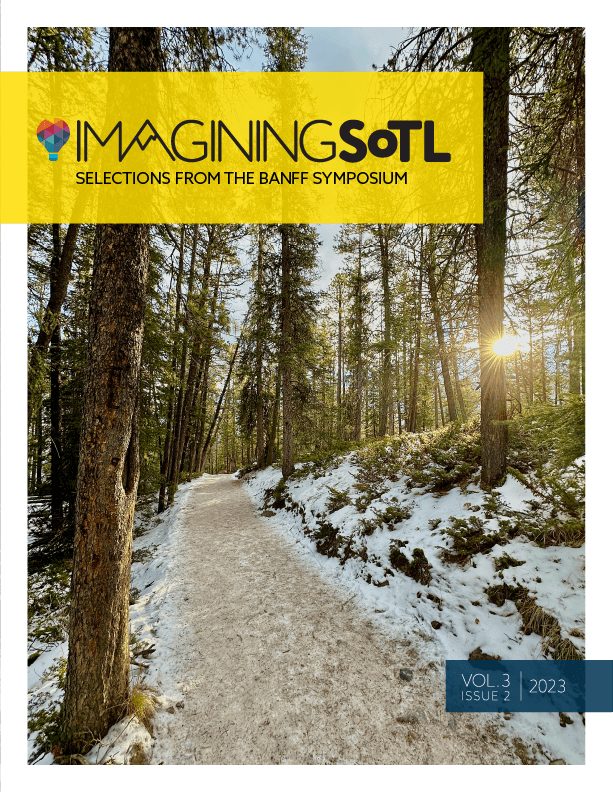Students-as-Partners versus Students-as-Employees: Division of Labour between Students, Faculty, and Staff in the McMaster Student Partners Program
DOI:
https://doi.org/10.29173/isotl689Keywords:
students as partners (SaP), mixed methods, equity, reciprocityAbstract
Many post-secondary institutions have implemented students-as-partners frameworks to redefine traditional educational practices and value students as co-creators of knowledge. The aim of this study was to investigate the degree to which students are working as partners and co-creators of knowledge with faculty and staff, versus replicating traditional hierarches. Herein, we undertook a multi-methods study consisting of a secondary analysis and a survey of one cohort of the student-as-partners program at McMaster University, as well as qualitative interviews. We found that some languages practices replicated traditional hierarchies, which was reflected in the degree to which partners contributed intellectually to the work undertaken. However, we also found meaningful shifts in practices occurred over the course of working collaboratively to foster more equitable partnerships. Herein, faculty and staff bore the responsibility of sharing power with student partners, but the blurring of professional and personal boundaries complicated the ethics of partnership.
Downloads
References
Ahmad, A., Ali, A., VanMaaren, J., Barrington, J., Merritt, O., & Ansilio, K. (2017). Partnership in practice: Implementing Healey’s conceptual model. International Journal for Students as Partners, 1(2), 1–10. https://doi.org/10.15173/ijsap.v1i2.3197
Bovill, C. (2017). A framework to explore roles within student-staff partnerships in higher education: Which students are partners, when, and in what ways? International Journal for Students as Partners, 1(1), 1–5. https://doi.org/10.15173/ijsap.v1i1.3062
Braun, V., & Clarke, V. (2021). Thematic analysis: A practical guide. SAGE.
Brown, K., de Bie, A., Aggarwal, A., Joslin, R., Williams-Habibi, S., & Sivanesanathan, V. (2020). Students with disabilities as partners: A case study on user testing an accessibility website. International Journal for Students as Partners, 4(2), 97–109. https://doi.org/10.15173/ijsap.v4i2.4051
Cook-Sather, A. (2020). Respecting voices: How the co-creation of teaching and learning can support academic staff, underrepresented students, and equitable practices. Higher Education, 79(5), 885–901. https://doi.org/10.1007/s10734-019-00445-w
de Bie, A., Krishna, S., Nguyen, E., & Marquis, E. (2022). Considerations for seeking equity and justice through pedagogical partnership: Four partners in conversation. Imagining SoTL, 2(1), 19–38. https://doi.org/10.29173/isotl603
de Bie, A., Marquis, E., Cook-Sather, A., & Luqueño, L. P. (2019). Valuing knowledge(s) and cultivating confidence: Contributions of student–faculty pedagogical partnerships to epistemic justice. In J. Hoffman, P. Blessinger, & M. Makhanya (Eds.), Strategies for fostering inclusive classrooms in higher education: International perspective on equity and inclusion (pp. 35–48). Emerald Publishing.
Freire, P. (1974/2003). Pedagogy of the oppressed. Continuum International Publishing Group.
Gergen, K. J. (2009). Relational being: Beyond self and community. Oxford University Press.
Hanna-Benson, C., Kroeze, S., Gandhi, R., Haffie, T., & Wahl, L. M. (2020). Students as partners in collaborative course design and educational research. International Journal for Students as Partners, 4(2), 61–80. https://doi.org/10.15173/ijsap.v4i2.4237
Healey, M., Flint, A., & Harrington, K. (2014). Engagement through partnership: Students as partners in learning and teaching in higher education. Higher Education Academy.
Healey, M., Flint, A., & Harrington, K. (2016). Students as partners: Reflections on a conceptual model. Teaching & Learning Inquiry the ISSOTL Journal, 4(2), 8–20. https://doi.org/10.20343/teachlearninqu.4.2.3
hooks, b. (1994). Teaching to transgress: Education as the practice of freedom. Routledge.
Hsieh, H-F., & Shannon, S. E. (2005). Three approaches to qualitative content analysis. Qualitative Health Research, 15(9), 1277–1288. https://doi.org/10.1177/1049732305276687
Kaur, A., Awang-Hashim, R., & Kaur, M. (2019). Students’ experiences of co-creating classroom instruction with faculty—A case study in eastern context. Teaching in Higher Education, 24(4), 461–477. https://doi.org/10.1080/13562517.2018.1487930
Marquis, E. (2017). Undergraduate research and student-staff partnerships: Supporting the development of student scholars at a Canadian teaching and learning institute. Scholarship and Practice of Undergraduate Research, 1(1), 39–44.
Matthews, K. E. (2017). Five propositions for genuine students as partners practice. International Journal for Students as Partners, 1(2), 1–9. https://doi.org/10.15173/ijsap.v1i2.3315
Matthews, K. E., Cook-Sather, A., Acai, A., Dvorakova, S. L., Felten, P., Marquis, E., & Mercer-Mapstone, L. (2019). Toward theories of partnership praxis: An analysis of interpretive framing in literature on students as partners in teaching and learning. Higher Education Research & Development, 38(2), 280–293. https://doi.org/10.1080/07294360.2018.1530199
Mercer-Mapstone, L., Dvorakova, S. L., Matthews, K. E., Abbot, S., Cheng, B., Felten, P., Knorr, K., Marquis, E., Shammas, R., & Swaim, K. (2017). A systematic literature review of students as partners in higher education. International Journal for Students as Partners, 1(1), 1–23. https://doi.org/10.15173/ijsap.v1i1.3119
Mercer-Mapstone, L., & Abbot, S. (Eds.). (2020). Power of partnership: Students, staff, and faculty revolutionizing higher education. Elon University Center for Engaged Learning.
Mercer-Mapstone, L., Islam, M., & Reid, T. (2021). Are we just engaging “the usual suspects”? Challenges in and practical strategies for supporting equity and diversity in student–staff partnership initiatives. Teaching in Higher Education, 26(2), 227–245. https://doi.org/10.1080/13562517.2019.1655396
Published
Issue
Section
License
Copyright (c) 2023 Celeste Suart, Kelsey Harvey, Jennifer Zhu, Maham Ali, Martha Cassidy-Neumiller

This work is licensed under a Creative Commons Attribution-NonCommercial-NoDerivatives 4.0 International License.




